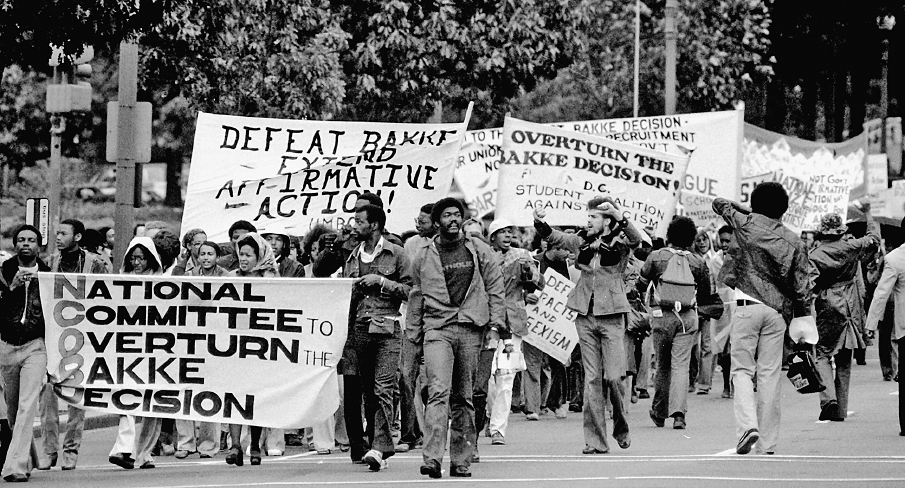America’s History: Printed Page 950
America: A Concise History: Printed Page 863
America’s History: Value Edition: Printed Page 841
Civil Rights in a New Era
When Congress banned job discrimination in the 1964 Civil Rights Act, the law required only that employers hire without regard to “race, color, religion, sex, or national origin.” But after centuries of slavery and decades of segregation, would nondiscrimination bring African Americans into the economic mainstream? Many liberals thought not. They believed that government, universities, and private employers needed to take positive steps to open their doors to a wider, more diverse range of Americans — including other minority groups and women.
Among the most significant efforts to address the legacy of exclusion was affirmative action — procedures designed to take into account the disadvantaged position of minority groups after centuries of discrimination. First advanced by the Kennedy administration in 1961, affirmative action received a boost under President Lyndon Johnson, whose Labor Department fashioned a series of plans in the late 1960s to encourage government contractors to recruit underrepresented racial minorities. Women were added under the last of these plans, when pressure from the women’s movement highlighted the problem of sex discrimination. By the early 1970s, affirmative action had been refined by court rulings that identified acceptable procedures: hiring and enrollment goals, special recruitment and training programs, and set-asides (specially reserved slots) for both racial minority groups and women.

Affirmative action, however, did not please many whites, who felt that the deck was being stacked against them. Much of the dissent came from conservative groups that had opposed civil rights all along. They charged affirmative action advocates with “reverse discrimination.” Legal challenges abounded, as employees, students, and university applicants went to court to object to these new procedures. Some liberal groups sought a middle position. In a widely publicized 1972 letter, Jewish organizations, seared by the memory of quotas that once kept Jewish students out of elite colleges, came out against all racial quotas but nonetheless endorsed “rectifying the imbalances resulting from past discrimination.”
A major shift in affirmative action policy came in 1978. Allan Bakke, a white man, sued the University of California at Davis Medical School for rejecting him in favor of less-qualified minority-group candidates. Headlines across the country sparked anti-affirmative action protest marches on college campuses and vigorous discussion on television and radio and in the White House. Ultimately, the Supreme Court rejected the medical school’s quota system, which set aside 16 of 100 places for “disadvantaged” students. The Court ordered Bakke admitted but indicated that a more flexible affirmative action plan, in which race could be considered along with other factors, would still pass constitutional muster. Bakke v. University of California thus upheld affirmative action but, by rejecting a quota system, also called it into question. Future court rulings and state referenda, in the 1990s and 2000s, would further limit the scope of affirmative action. In particular, California voters passed Proposition 209 in 1996, prohibiting public institutions from using affirmative action to increase diversity in employment and education.
TRACE CHANGE OVER TIME
Question
How did affirmative action evolve between 1961 and 1978?